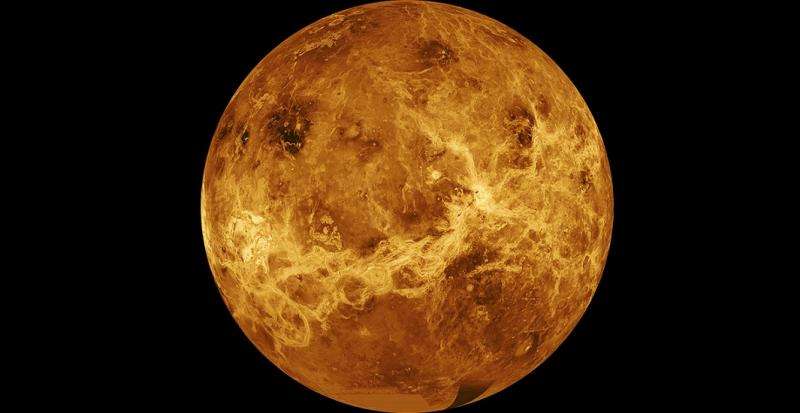Proposed CubeSat mission to study atmospheric processes on Venus

A small CubeSat designed to investigate atmospheric processes on Venus has been recently chosen by NASA for further development. The spacecraft, known as the CubeSat UV Experiment (CUVE), is one of 10 missions to study solar system planets and asteroids, selected by the agency under the Planetary Science Deep Space SmallSat Studies (PSDS3) program.
CUVE will be a 12-unit CubeSat (one unit is a 3.94-inch cube) with a mass less than 400 lbs. (180 kilograms). It will carry a high-resolution ultraviolet (UV) spectrometer and a broad-spectrum UV imager specifically designed to address the strategic science questions relevant to the NASA planetary science program. CUVE will orbit Venus to measure ultraviolet absorption and nightglow emissions in order to understand the planet's atmospheric dynamics.
"CUVE will use remote sensing instruments to study the distribution of energy in Earth's sister planet Venus," Valeria Cottini, CUVE Principal Investigator at the University of Maryland in College Park told Astrowatch.net.
Many mysteries of Venus still remain unsolved, and among them is an enigmatic UV absorber of unknown origin that absorbs about half the solar radiation downwelling in the planet's atmosphere. CUVE will try to resolve this puzzle as its primary objectives are to understand the nature, concentration, and distribution of this unidentified source, atmospheric UV nightglow, abundance of trace gases, and cloud-top atmospheric dynamics.
"CUVE will establish the distribution of the unknown UV absorber, correlation with the UV co-absorbers (sulfur monoxide and sulfur dioxide), and provide valuable clues to identifying the source. The mission is also designed to address the role of the cloud-top dynamics and chemistry in global energy balance. These results will constrain theories that describe the evolutionary processes of Venus," Cottini said.
Therefore, CUVE has the potential to greatly improve our understanding of Venus' winds, atmospheric dynamics, chemistry and energy balance. Moreover, the probe's secondary goal is to establish the efficacy of CubeSat-based instruments in making meaningful scientific measurements in Venus' harsh environment and proximity to the solar radiation field.
The CUVE project is still in its infancy as the mission's critical aspects have to be yet carefully evaluated and addressed. While the University of Maryland leads the project, it also includes specialists in planetary science, atmospheric modeling and spacecraft instrumentation from NASA's Goddard Space Flight Center in Greenbelt, Maryland, the Catholic University of America in Washington, D.C., and the Institute for Space Astrophysics and Planetology INAF-IAPS in Italy.
"The University of Maryland has a strong planetary science research group. The mission will provide impetus in developing future CubeSat missions to other planetary science targets of interest to this community. CubeSat based planetary science mission concepts are in their infancy, and this mission will allow students to be directly involved in an exciting opportunity to address long standing unresolved scientific questions," Cottini noted.
CUVE is part of the PSDS3 program managed by NASA's Science Mission Directorate. The program aims to develop a small satellite strategy, with the goal of identifying high-priority science objectives in each discipline that can be addressed with CubeSats and SmallSats, managed for appropriate cost and risk.
Provided by Astrowatch.net




















